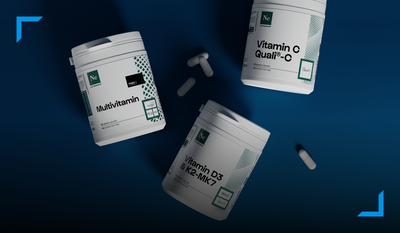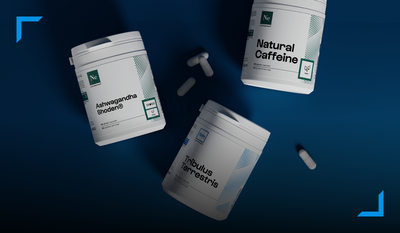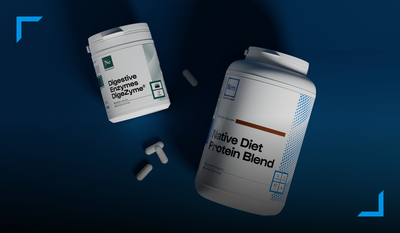0 commentaires
The ketogenic or "keto" diet is attracting more and more followers thanks to its effectiveness for fat loss. What exactly does it consist of, what foods should you favor and what are its characteristics?
What is a ketogenic diet?
The ketogenic diet, also called the “keto diet,” is a popular diet recommended for rapid weight loss. Unlike other diets, this one is based on a diet very low in carbohydrates and high in fat. The goal is to reduce glycogen reserves, to the point of exhaustion, so that the body draws on accumulated fat as a source of energy.
Originally, the ketogenic diet was recommended for certain health problems including epileptic seizures (1) and the side effects of heavy treatments. Its role in weight loss diets and the management of overweight people was not defined until much later.
How does the state of ketosis work?
The ketogenic diet allows you to enter a state of ketosis. This is a metabolic state achieved due to the lack of carbohydrates in the body. In order to produce energy in an intermediate way, the body draws on fat reserves. When fatty acids are broken down, they are transformed into what are called ketone bodies. There are three types: acetoacetate, hydroxybutyrate and acetone.
There are several ways to enter ketosis: the first is of course to reduce your carbohydrate intake and increase your fatty acid intake. Normally, the recommended nutritional intake is: 15% protein, 45-50% carbohydrates and 35-40% fat*. During a ketogenic diet, you can count on 5 to 10% carbohydrates, 70 to 80% fat and 20 to 25% protein.
*data set by Anses (the National Food Safety Agency) in 2019.
The second way is to start your ketogenic diet by practicing a short-term fast which will allow you to empty your carbohydrate stores more easily. Fasting can also be intermittent , by skipping a meal for example. However, this method can be more brutal for your body, so it is always advisable to consult a doctor before starting.
In order to maintain an effective state of ketosis, it is important to burn the carbohydrates ingested. For this, regular physical activity is recommended. In addition, by remaining active, the body will be forced to use fats more easily to produce energy. Weight loss will therefore be all the faster.
Try to exercise at low intensity for at least 30 minutes every day or three times a week at high intensity.
What are the benefits of the ketogenic diet?
Fat loss
As seen earlier, when your carbohydrate stores are empty, your body will switch to burning fat to provide energy to cells. This metabolic state allows weight loss through the rapid use of fat. This is why the ketogenic diet is used in the treatment of people who are overweight or obese (2,3).
Additionally, by cutting out carbohydrates, the ketogenic diet helps control blood sugar levels.
Finally, the slimming action of the diet is also due to its richness in ketones in the body which would have effects on the reduction of appetite.
Energy improvement
Lipids, which are the main food source in the diet, provide a much higher level of energy than carbohydrates: there are 4 calories in 1 gram of carbohydrates and 9 calories in 1 gram of lipids. In addition, lipid stores are much less limited than glycogen stores.
Two of the ketone bodies (acetoacetate and hydroxybutyrate) are considered to be true fuels for several organs, including the brain and the heart.
Thanks to the energy provided and the antioxidant activity of ketone bodies, the ketogenic diet has many benefits in neurological functioning. This is why its effects arouse the interest of researchers in the case of certain neurodegenerative diseases (4,5).
The distribution of macronutrients
We have seen previously that the distribution of macronutrients is very specific, for a ketogenic diet. There are 5 to 10% carbohydrates, 70 to 80% lipids and 20 to 25% proteins.
Proteins
The protein level should be increased. For one person, it is 1 to 1.5g per kg of body weight. Here are some examples of protein sources:
- Meat
- Poultry
- Seeds
- Hard cheeses
- Eggs
- Tofu
Carbohydrates
They should be avoided as much as possible in a ketogenic diet and gradually reintegrated into the diet. The carbohydrate rate should not exceed 10% of daily intake and come from specific sources. Here are some examples:
- Sweet potato
- Rice
- Quinoa
- Oat flakes
Lipids
Lipids in the form of good fats are the first nutrients to favor in order to practice a ketogenic diet. It is necessary to consume enough of them and regularly in order to stay in a state of ketosis. The lipid level must be between 70 and 80% of the daily intake. The main sources of fats are obviously of plant origin: olive oil, coconut oil, seeds, nuts, etc. But there are also animal fats such as omega-3 and oily fish. Here are other examples:
- Meats, especially beef;
- High-fat, low-fat vegetables like avocado, cucumber, kale;
- Eggs;
- Different dairy products (cream, butter, cheese)
- Dried fruits
- Oily fish
- Vegetable oils (coconut, olive, rapeseed or sesame)
Ketogenic Diet Meal Ideas
In a ketogenic diet, it is crucial to choose meals that are high in fat and low in carbohydrates to maintain the state of ketosis. For breakfast, a combination of scrambled eggs, avocado, and bacon is ideal. Lunch could consist of beef-stuffed peppers served with Greek yogurt for an extra protein boost. When cravings strike, opt for nuts or pancakes made with low-carb ingredients with peanut butter. Dinner could include cauliflower risotto with chicken and mushrooms, which effectively replaces traditional rice with a low-carb alternative. It is essential to avoid starchy, sugary and processed foods, as well as certain fruits and vegetables that are high in sugar. This diet not only promotes weight loss but also better management of the body's energy.
Side effects
Like any diet that restricts the consumption of certain foods, the ketogenic diet can be difficult to stick to and may even cause some disadvantages.
Among these, the arrival of fatigue, more or less significant depending on the personal lifestyle habits of each person. Indeed, by eliminating a certain amount of nutrients from the diet, it is possible to feel a lack of vitamins, minerals and fibers. In this case, macronutrient supplementation may be an adequate solution.
There is also a strong tendency towards dehydration. It is therefore recommended to drink 2.5 liters per day, or even more during training days.
Finally, the ketogenic diet is accompanied by a period called “keto flu,” where the body is in a state of ketosis. This can occur after the fifth day of the diet, up to two weeks later.
Scientific references
Thesis: The ketogenic diet, a therapeutic alternative in drug-resistant epilepsy. 2014. Faculty of Pharmacy.
Basilio Moreno, Ana B Crujeiras, et al. Obesity treatment by very low-calorie-ketogenic diet at two years: reduction in visceral fat and on the burden of disease . Endocrine. 54, 681–690 (2016).
B, Ingrid S. et al. Very-low-carbohydrate ketogenic diet v. low-fat diet for long-term weight loss: a meta-analysis of randomized controlled trials . Cambridge University Press. 2013
Dariusz Włodarek. Role of Ketogenic Diets in Neurodegenerative Diseases (Alzheimer's Disease and Parkinson's Disease) . Nutrients. 2019 Jan 15;11(1):169.
Prins ML, Matsumoto JH The collective therapeutic potential of cerebral ketone metabolism in traumatic brain injury . J. Lipid Res. 2014;55:2450–2457. doi: 10.1194/jlr.R046706.


























